Hungarian Grand Prix: Here’s what you missed while you were sleeping
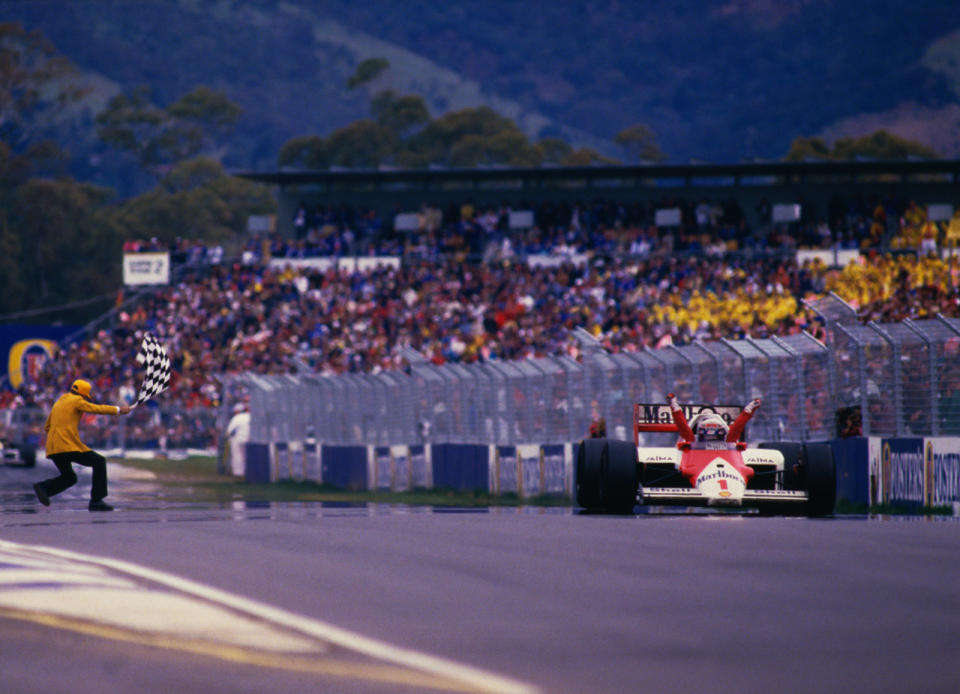
Back in the 1980s (pictured), F1 cars had engines designed to last three laps at qualifying pace; cars were forever spinning off and you were never quite sure what was going to happen until the end of the very last lap.
Murray Walker made a career out of this uncertainty, the commentator’s jinx he seemingly put on drivers actually being a reflection of just how much could go wrong in F1 back then.
These days… not so much. Engines have to last several races, drivers nurse their cars to preserve the mechanical bits, the rubber bits and the petroleumy bits, and the FIA has to install sensors to check that motorsport’s finest aren’t cheating by taking racing lines that aren’t actually part of the circuit.
Which brings us to the 2016 Hungarian Grand Prix. Look, it wasn’t that bad, really. Here are a few reasons why…
There’s only room for one champ
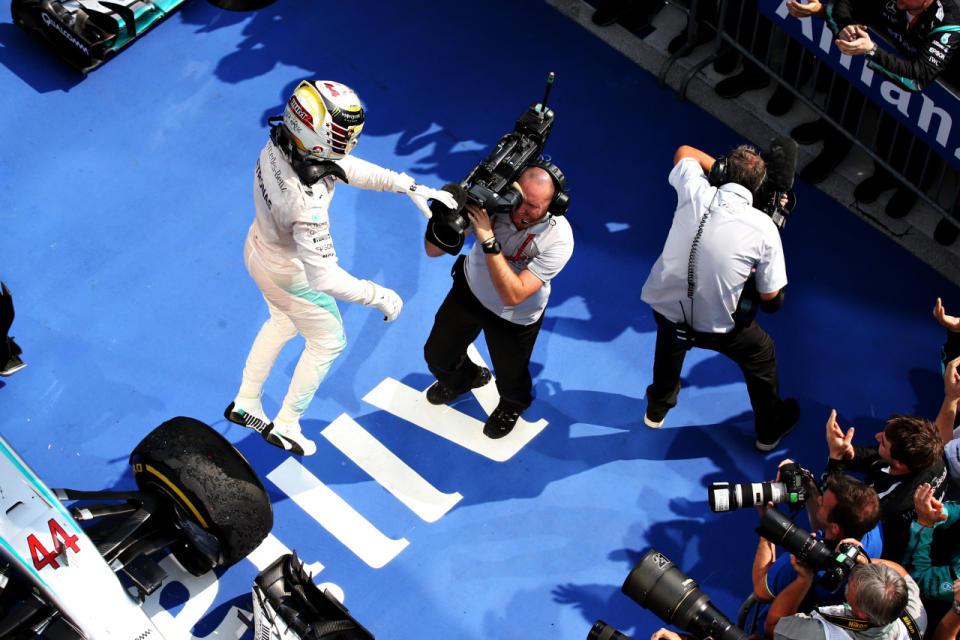
This is the race where Lewis Hamilton, at one point 43points behind team-mate Nico Rosberg, took a championship lead for the first time in the season. Boom.
No wonder he pulled off one of those ‘Dab’ shapes when he got out of his car (look it up; I had to).
Next race is Germany, Rosberg’s home turf, and if Hamilton (pictured) wins there it’s sayonara to the 2016 championship.
Hamilton has repeatedly said he wants to go into the F1 summer break leading and, well, you wouldn’t bet against that, would you?
His dominance in Hungary was mighty impressive – ok, he qualified only second but he was leading the race before he was out of sight of the starting line.
There were some wonderful radio exchanges – how we need more of these – between Merc bosses and Hamilton just before the halfway mark, when Hamilton was told to speed up or Rosberg would be given the advantage of pitting first.
Hamilton said he was going as fast as he could and then… well I’ll be blowed, he found some more pace from somewhere.
Time and time again, Rosberg got within spitting distance of his team-mate only for Hamilton to turn the wick up and pull away just enough.
This was Hamilton managing his race like a champion, one champion in particular – Alain Prost.
The Frenchman was famous for aiming to win every race while driving as slowly as he could.
Hamilton needs to do this – he’s gone through a lot of engines and expects to start picking up grid penalties later in the season once he’s used up his allocation. He needs to eke out as many miles from his mechanicals as he possibly can now, to avoid handing Rosberg too much of an advantage in the latter stages of the season.
Looks like he’s doing quite a good job – he said after the race that he was in control, turning up the pace when he had to.
Sorry, Nico, but this doesn’t look good for your championship hopes.
He’s not the Messiah, he’s a very naughty boy
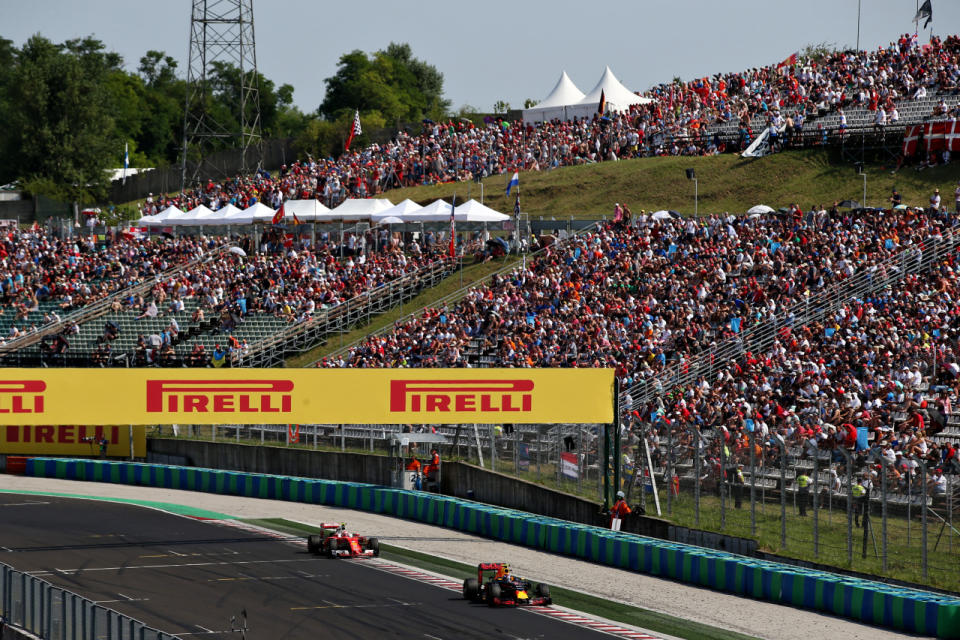
Max Verstappen continues to fascinate. At this race, he found himself holding off a hard-charging Kimi Raikkonen (pictured) lap after lap after lap, to finish fifth.
Whether Verstappen is the new Schumacher remains to be seen but he’s showing all the signs of pushing the rules to the limit, as great drivers are wont to do.
On several occasions, Raikkonen complained that Verstappen was weaving to stop him overtaking – a defending car can make one change of direction to defend, and is also entitled to take the racing line into a corner.
Max did look like he was, perhaps, maybe, just a little, switching left and right more than he should, and not for the first time of late – Nico Rosberg complained about Verstappen’s tactics at Silverstone.
But it seems that Max is acting within the letter, if not always the spirit, of the regulations, and he’s putting on a great show in the process.
More please.
As for his Red Bull colleague Daniel Ricciardo, his third place was very important. He’s been outscored by Verstappen since the 18-year-old swapped to Red Bull earlier in the season and he really needed a result that demonstrated how good a driver he is.
Third place at the Hungaroring did just that, the best of the non-Mercedes and ahead of an improving Sebastian Vettel in the Ferrari.
As Ricciardo said himself, it was a result that put the (utterly huge) smile back on his face. Sweet.
Are Ferrari back?

No. Well, that was easy.
Still, on the positive side, they showed good race pace. But they still couldn’t get everything switched on for qualifying and that wrecked their weekend before it had got properly started.
Vettel in fourth stopped Ricciardo in third from falling asleep, while Raikkonen’s charge through the field from 14th on the grid was impressive enough until he got stuck behind Verstappen.
Yes, he moaned about Verstappen’s driving (see above) but I’ve got a hunch that he didn’t make the most of the opportunities that presented themselves at Turn One.
Kimi’s great strength these days is in bringing home points for the Constructors’ Championship and that, in part at least, reflects a cautiousness in his driving that has come with age.
I suspect that Ricciardo, Hamilton, Verstappen himself – and Senna, Piquet, Schumacher – would have grabbed the half-chances at Turn One and converted them into an overtake or a racing incident.
I don’t for a second believe Ferrari will be anything other than happy with his performance – that’s why they’ve extended his contract.
But I do believe it speaks volumes for the Maranello mindset right now. And it’s not a championship-winning mindset.
It’s the rules, stupid. The stupid rules.
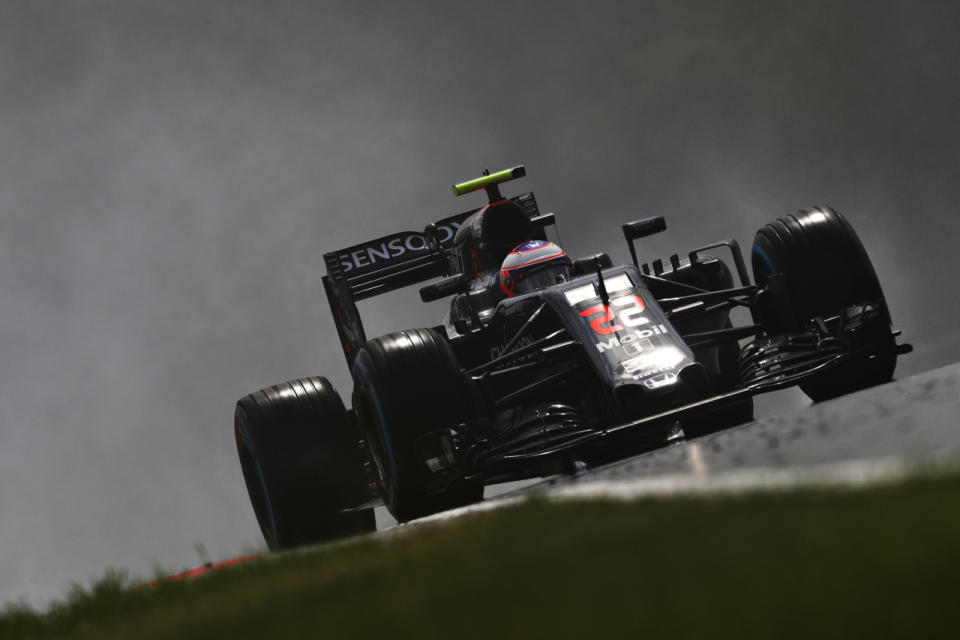
OK, we had monitors at turns Four and Eleven to check cars weren’t straying more than 20cm off the track.
Why 20cm? Beats me, something about margin for error, according to Race Director Charlie Whiting.
I’ve got to say, when Wimbledon has for years been using technology that can tell whether a tiny tennis ball doing 140mph is inside a line or not, it’s bemusing that F1 needs a 20cm error margin for a car. Hey-ho, F1’s only the cutting edge of sporting technology.
Still, it was good to see an attempt to stop drivers gaining an advantage by racing off the track rather than on it and, hopefully, F1 will get better at this.
But the radio rules, ohhhhh the radio rules.
Never mind that I enjoy listening to those spiky exchanges between pit wall and drivers, and I believe F1 (as a broadcast spectacle at least) is the poorer for their absence.
And never mind the arguments about driver coaching – look, we don’t complain when football managers stand on the touchline bellowing balderdash at their wayward charges, it’s their job after all.
Put all that to one side. And consider the merits of a communication ban that not only denies us fans entertainment, but also denies drivers the chance to sort race-ending problems before their car ends up in the barrier or hoisted on one of those forklifts.
Jenson Button (pictured) complained that one of his pedals was ‘Going to the floor’. He was told, against the rules, not to change gear because there was a hydraulic problem.
Then he drove through the pits in what looked like recognition that the message from his team had been a rule-breaker.
And then he got a drive-through penalty anyway.
How is this good for F1? How? How is failing to help a driver avoid retiring his car beneficial to the fans who have paid a fortune to watch him race?
How?
How can the FIA justify punishing a team for passing on a message about a problem that appeared to involve a pedal going to the floor? There are only two pedals in these cars, and they’re both pretty important for the safe functioning of the vehicle.
On lap 14, Jenson messaged his team rather laconically, saying: ‘So the brake pedal going to the floor isn’t a safety issue..?’
Worry not, Jenson. We’ll add that decision to the long list of idiot rule decisions that F1 has come up with this season.
And celebrate F1’s position on the cutting edge of idiot rules.
That’s entertainment. Isn’t it? Hello?
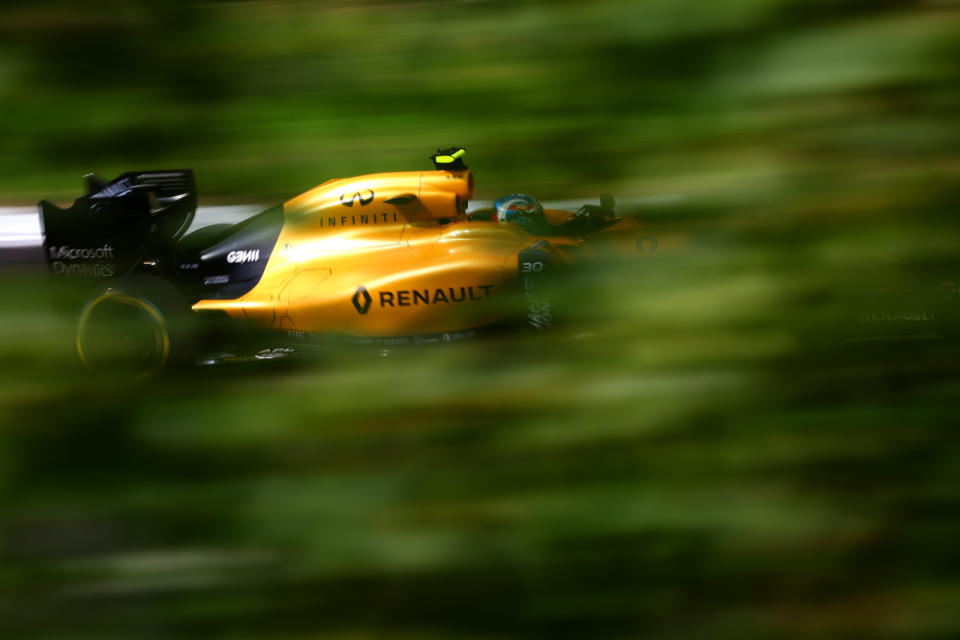
It wasn’t what you’d call a classic race. There’s very seldom much overtaking at the Hungaroring, so that was no surprise, but there have been some cracking moments over the years (check out Piquet on Senna in 1986, for example).
But there are three reasons I’m happy to see this race remain on the calendar.
Firstly, I still believe that the threat of overtaking is cracking entertainment, and we were treated to that in spades. The top six cars were all involved in duels and, let’s be honest, seeing Kimi repeatedly fail to pass Max was more entertaining than watching him blow past on DRS power.
Secondly, the Hungaroring is such a glorious contrast to modern-day F1 tracks. It’s the slowest purpose-built raceway on the calendar and it throws up challenges and opportunities that are absent elsewhere – witness Jolyon Palmer’s (pictured) drive into the points. Well, until he span his Renault out of contention on lap 49.
Thirdly, it’s about 12miles from Budapest. If you put your hand in your pocket and actually go to the Hungarian Grand Prix, you’ve got a cracking city to enjoy while you’re out there, and there’s even a free bus to get you to the circuit and back. See, there was a time when motor-racing wasn’t just about what we all watch on our goggle boxes.
There, a fairly dull race but I’ve managed to finish by accentuating the positive. Someone should appoint me to the F1 rules committee.

 Yahoo Sport
Yahoo Sport 





































